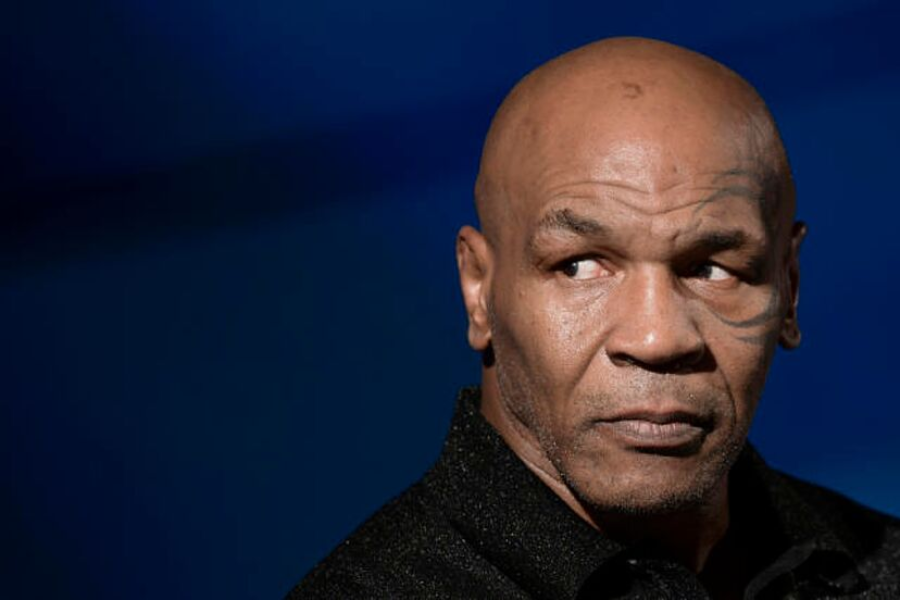Mike Tyson, widely regarded as one of the most ferocious and dominant boxers in history, is a figure whose life story is filled with highs and lows. His meteoric rise to fame, his financial struggles, his bankruptcy, and eventual comeback have captivated the world for decades. Tyson’s impact on the sport of boxing, as well as his ventures beyond the ring, have made him a household name. But perhaps what makes Tyson’s journey most compelling is the financial rollercoaster he has experienced—from being one of the wealthiest athletes in the world to declaring bankruptcy, and then finding a way to regain his fortune.
Tyson’s Rise To Fame: From Humble Beginnings To World Champion
Born on June 30, 1966, in Brooklyn, New York, Mike Tyson grew up in a tough neighborhood. Raised by a single mother in a world filled with crime and poverty, Tyson’s early life was marked by hardship and struggle. However, it was through his troubled childhood that Tyson discovered boxing, a sport that would change his life forever. Tyson’s natural talent and ferocity in the ring were immediately apparent, and by the time he was a teenager, he was already considered a prodigy.
At just 20 years old, Tyson made history by becoming the youngest boxer to win the heavyweight title. His knockout power was unmatched, and his aggressive style of fighting earned him the nickname “Iron Mike.” Tyson’s reign as a heavyweight champion was legendary, and he became the face of boxing in the late 1980s. He defeated top fighters like Larry Holmes and Michael Spinks, establishing himself as the most dominant force in the sport.
The Peak Of Mike Tyson’s Earnings: A Boxer at the Top of His Game

Tyson’s financial success mirrored his success in the ring. During his peak, Tyson was one of the highest-paid athletes in the world. Over the course of his career, he earned an estimated $430 million from fight purses, endorsements, and other business ventures. His most lucrative contracts were with major networks like HBO and Showtime, who paid Tyson massive sums to broadcast his bouts.
At the height of his career, Tyson earned a record-breaking $103 million for his 2002 fight against Lennox Lewis. Of that sum, $75 million came from a lucrative pay-per-view deal. Tyson’s marketability and brand power were unmatched at the time, and he was able to cash in on his fame with endorsements from major brands, including Coca-Cola and Nike. His fighting contracts, along with his endorsement deals, made him a multimillionaire in a matter of years.
But while Tyson was earning hundreds of millions of dollars, his financial management left much to be desired.
The Lavish Lifestyle That Contributed to Tyson’s Financial Decline
As Tyson’s wealth grew, so did his spending. His lifestyle became legendary for its excess, with Tyson indulging in the finest cars, jewelry, homes, and rare animals. He owned an extensive collection of luxury cars, including Bentleys, Ferraris, and Rolls-Royces, and even purchased a private jet. In fact, Tyson once spent $4.5 million on cars and motorbikes alone, and another $240,000 per month on “walking around” money, which was essentially pocket money for daily expenses.
One of the most infamous purchases made by Tyson was his collection of Bengal tigers. Tyson was known to have had several tigers, each costing around $70,000. He famously had a $2 million golden bathtub created for his first wife, Robin Givens. Tyson also spent large sums on his houses, including a mansion in Ohio that featured 30 rooms, a massive estate in Las Vegas, and another grand residence in Maryland.
Tyson’s extravagance didn’t stop there. He reportedly spent $1.5 million in a single sitting at a Las Vegas car dealership, purchasing 20 cars at once. These lavish expenditures, while reflective of Tyson’s larger-than-life persona, ultimately led to his financial downfall. His wealth was slipping away due to excessive spending, poor investments, and an inability to manage his finances.
Mike Tyson’s Bankruptcy: The Fall of a Champion

By 2003, Tyson’s extravagant lifestyle and poor financial management caught up with him. Despite earning hundreds of millions of dollars, Tyson filed for bankruptcy, claiming to be $23 million in debt. He admitted that much of his fortune had been squandered on lavish purchases, bad investments, and legal battles. In a high-profile divorce from his second wife, actress Robin Givens, Tyson was forced to give up a substantial portion of his wealth. His promoters, including Don King, also took significant cuts of Tyson’s earnings, sometimes as much as 50%, which further drained his finances.
In an infamous interview in 2010 on The View, Tyson opened up about his bankruptcy, stating, “I’m totally destitute and broke. But I have an awesome life.” Despite his financial ruin, Tyson remained optimistic about his life and expressed gratitude for his family and friends. Tyson’s bankruptcy was a shocking turn of events, considering how much money he had earned at the peak of his career. But it also served as a stark reminder of the dangers of living beyond one’s means and the lack of financial planning that can plague even the wealthiest of individuals.
The Comeback: Tyson’s Path To Financial Recovery
Tyson’s financial struggles were far from the end of his story. In the years following his bankruptcy, Tyson worked tirelessly to rebuild his wealth. His return to the ring for a series of exhibition matches brought in significant revenue, and his foray into the world of entertainment opened up new doors for him.
One of the key turning points in Tyson’s career came with his appearance in the blockbuster film The Hangover (2009). His cameo as himself, where he punched a car window in a hilarious moment, became one of the most memorable parts of the film. The success of The Hangover led to further acting roles, including in its sequel, The Hangover Part II (2011), and in other films and television appearances. Tyson’s acting career helped him stay in the public eye, while also providing him with a steady stream of income.
In addition to his acting career, Tyson also ventured into the burgeoning cannabis industry. In 2016, he launched Tyson Ranch, a cannabis farm that has since become a major player in the cannabis business. Tyson’s interest in cannabis has been longstanding, with the boxer publicly discussing its therapeutic benefits for pain relief, especially in relation to his past injuries. The cannabis venture has proven to be a smart investment, helping Tyson regain financial stability and build his wealth back up. The farm has since expanded, offering cannabis products, including edibles, extracts, and wellness products.
Tyson’s Financial Growth: Beyond the Ring
In the years since his bankruptcy, Tyson has made a strong comeback. His net worth has steadily risen, and as of 2024, Tyson is estimated to be worth around $10 million. Although this is a far cry from the $300 million he once commanded, it marks a significant recovery. Tyson has continued to fight in exhibition matches, with his most recent fight being against Roy Jones Jr. in 2020. The bout, which was billed as a “legends” fight, generated significant revenue, with a reported $80 million in pay-per-view sales.
Moreover, Tyson’s investments in his cannabis business have paid off, as the industry has continued to expand in the United States. Tyson Ranch is now a thriving business, and Tyson is seen as a forward-thinking entrepreneur in the field. He also continues to make money through public speaking engagements, endorsement deals, and podcasting. Tyson’s podcast, Hotboxin’ with Mike Tyson, has gained popularity, attracting guests from the world of sports, entertainment, and beyond.
Mike Tyson’s Legacy: A Boxing Icon and Entrepreneur

Beyond his financial ups and downs, Mike Tyson’s legacy in the world of boxing is undeniable. Tyson is still regarded as one of the greatest heavyweight boxers in history, and his name is synonymous with power, speed, and ferocity in the ring. His combination of skills, raw athleticism, and mental toughness made him an unstoppable force during his prime.
However, Tyson’s influence extends far beyond boxing. His life story is one of triumph, tragedy, and resilience. Tyson has been open about his struggles, including his issues with addiction, his troubled relationships, and his time spent in prison. Through it all, Tyson has emerged as a more introspective and thoughtful figure, using his experiences to educate others on overcoming adversity.
Tyson’s Future and Ongoing Influence
In 2024, Tyson remains a relevant and influential figure. Despite the setbacks and challenges, Tyson’s name is still synonymous with the sport of boxing, and he continues to participate in exhibition matches and other events. His upcoming exhibition fight with Jake Paul is one of the most anticipated matches in recent years, drawing attention from boxing fans and casual observers alike. Tyson’s ability to stay relevant in the ever-changing world of sports entertainment is a testament to his enduring charisma and influence.
As for his financial future, Tyson is well-positioned to continue growing his wealth. His ventures in cannabis, his continued involvement in the entertainment industry, and his brand as a fighter and entrepreneur give him multiple streams of income. While he may never return to the heights of his former fortune, Tyson’s resilience and ability to adapt to changing circumstances make him a true success story.
FAQs About Mike Tyson Net Worth
1. What is Mike Tyson’s net worth in 2024?
As of 2024, Mike Tyson’s net worth is estimated to be around $10 million. This is a significant recovery after he filed for bankruptcy in 2003, and his fortune is largely attributed to his investments in the cannabis industry, acting roles, exhibition fights, and other business ventures.
2. How did Mike Tyson lose his fortune?
Mike Tyson lost his fortune due to excessive spending, poor financial management, and costly legal battles. Tyson’s lavish lifestyle, including buying luxury cars, expensive homes, and rare animals, as well as his hefty divorce settlements and fees paid to his promoter, Don King, contributed to his financial downfall. In 2003, Tyson filed for bankruptcy, declaring that he was $23 million in debt.
3. What are some of Mike Tyson’s most famous purchases?
Some of Mike Tyson’s most famous and extravagant purchases include:
- Several Bengal tigers, each costing around $70,000.
- A $2 million golden bathtub for his first wife, Robin Givens.
- A luxury car collection, which included Bentleys, Ferraris, and Rolls-Royces.
- A private jet and multiple luxury homes.
4. How did Mike Tyson make money after his bankruptcy?
After declaring bankruptcy, Tyson rebuilt his fortune by focusing on various revenue streams:
- Boxing Exhibition Matches: Tyson returned to the ring for exhibition bouts, including a high-profile match with Roy Jones Jr. in 2020.
- Acting Career: Tyson appeared in the Hangover movies and various TV shows and films, earning substantial money through these appearances.
- Cannabis Business: Tyson launched Tyson Ranch, a cannabis business that has become a key source of his wealth.
- Public Speaking & Podcasts: Tyson also earns money through his podcast, Hotboxin’ with Mike Tyson, and public speaking engagements.
Conclusion: Mike Tyson’s Unforgettable Legacy
Mike Tyson’s net worth journey—marked by incredible highs, devastating lows, and a remarkable comeback—reflects his larger-than-life persona. His story serves as a cautionary tale about the dangers of financial mismanagement, while also highlighting the power of redemption and reinvention. Tyson may never again reach the $400 million he once earned, but his ongoing efforts to rebuild his wealth, expand his businesses, and contribute to society prove that there is life after the ring—and in Tyson’s case, that life is anything but ordinary.
Through it all, Tyson’s legacy as one of boxing’s greatest champions remains unshaken, and his financial journey offers a compelling reminder of the complexities that come with fame, fortune, and failure. His story is one of perseverance, reminding us that even the most iconic figures can face setbacks—and yet, with determination, they can rise again.
Read Next : Thenews Face


